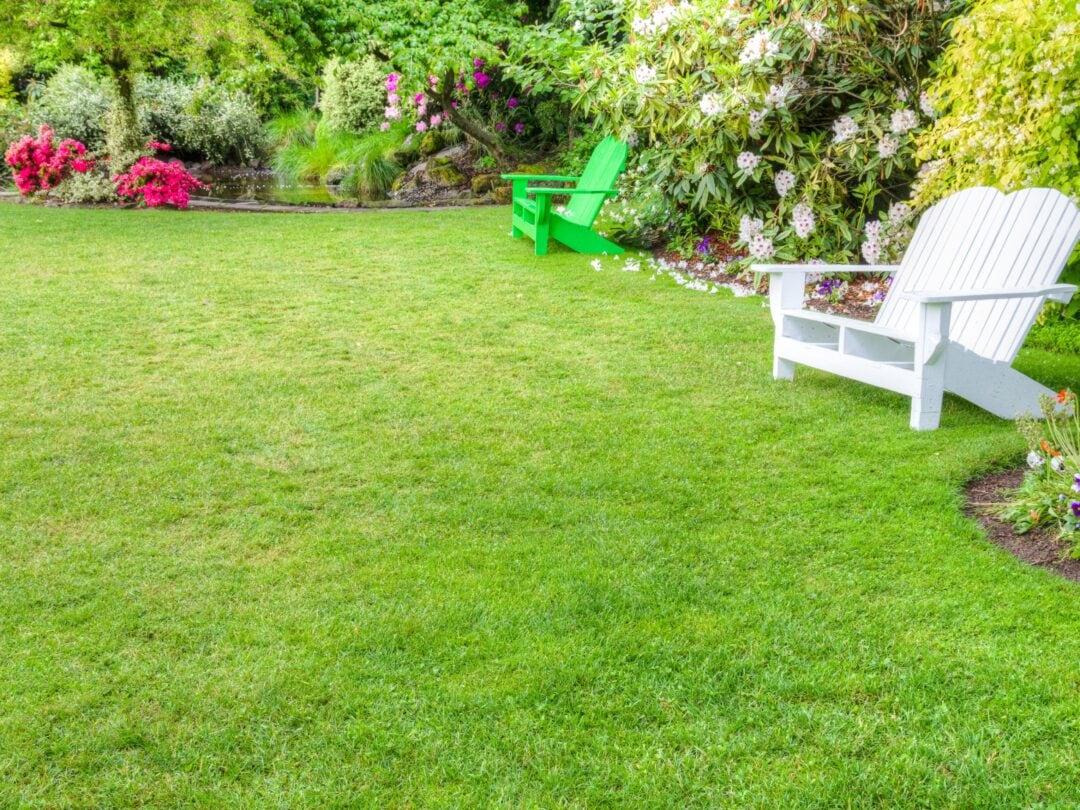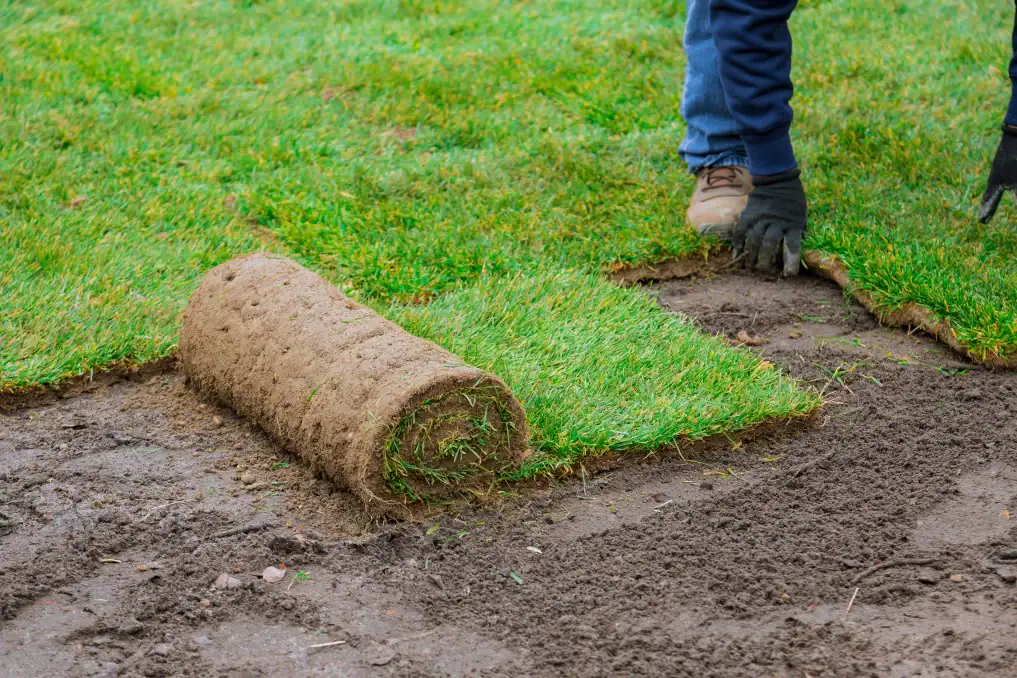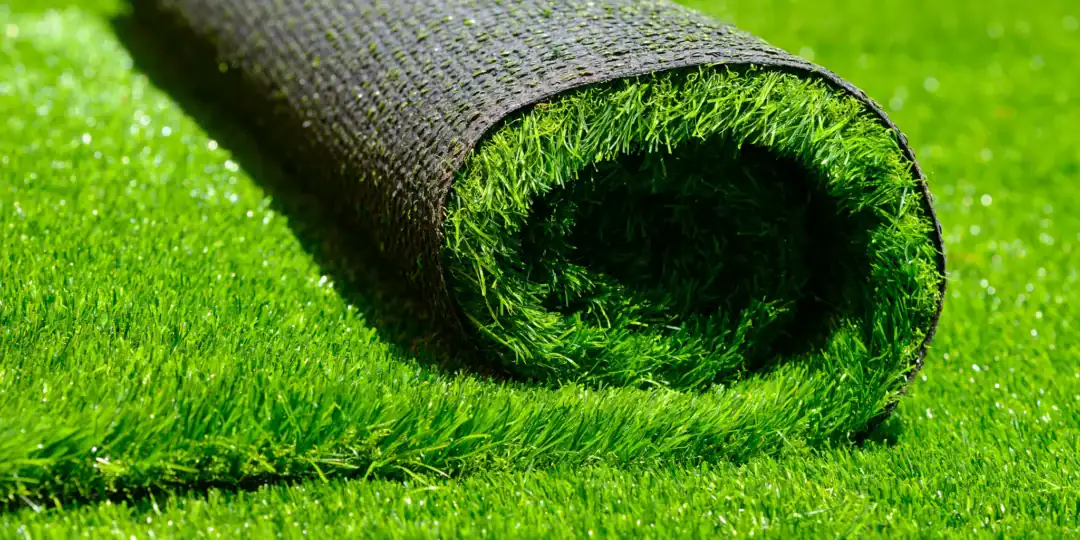Seed vs. Sod vs. Turf: Which Is Best?

Have you ever been a victim of the age-old adage, “The grass is always greener on the other side,”? Boasting healthy green grass is a luxury that is oftentimes taken for granted. Until you notice greener grass on the other side. Grass is often the first thing people notice in any yard or outdoor area.
Did you know that not all grass is made and planted the same way?
Large areas of grass are usually made up of one of the following grass types: seeded, sod, or turf. When considering what grass type to go with for your landscape project, you should weigh the pros and cons to find the best fit for you. You don’t know the pros and cons? That’s where we step in.
Royal Pools G2 Landscaping has been installing inground pools and transforming backyards for over 25 years now. In addition to pool installation, we love educating prospective clients on all things pools and landscaping. So, what is the best grass type? Best can be subjective, but we can certainly help you determine which grass type would be best for you.
Seed: The Natural Grass Growing Method

Seeding is the most traditional and organic approach to establishing a lawn. It involves distributing grass seed over properly prepared soil, where the seeds will germinate, take root, and gradually develop into a mature lawn.
Seeding allows homeowners and landscapers to choose . from a wide range of grass types tailored to their specific climate, sun exposure, and soil conditions.
Pros of Seeding:
- Lower Upfront Cost: Seed is significantly more affordable than sod or synthetic turf, making it budget-friendly.
- Wide Selection of Grass Types: Homeowners can choose from cool-season grasses (like Kentucky bluegrass or fescue) or warm-season grasses (like Bermuda or Zoysia), with various color and texture options.
- Low Labor Requirements: Seeding involves relatively simple installation compared to sod or turf.
- Natural Establishment: Grass grows directly in the native soil, adapting naturally to its environment.
Cons of Seeding:
- Slower Establishment: It can take several weeks to months for seeds to germinate and mature into a usable lawn.
- Higher Initial Maintenance: Requires consistent watering, fertilizing, and mowing during early growth stages.
- Erosion Risks: Bare soil is vulnerable to runoff and erosion before grass fully establishes.
- Weed Competition: Young seedlings compete with weeds, which may require herbicide treatments.
- Seasonal Timing: Grass seed must be planted during specific windows (spring or fall) depending on the grass type and local climate.
Sod: Instant Lawn Solution

Sod is pre-grown, mature grass with an established root system that comes in rolls or squares and is transplanted onto prepared soil. It provides immediate green coverage and is ideal for those seeking a fast transformation. Sod includes various grass types but is usually limited to what’s regionally available.
Pros of Sod:
- Instant Results: Provides an immediate green lawn with a polished, finished look.
- Minimal Weed Invasion: Dense turf discourages weeds from taking hold during early establishment.
- Rapid Rooting: Sod begins rooting into the soil quickly, especially under optimal conditions.
- Erosion Control: Offers immediate ground coverage, reducing erosion on sloped or disturbed areas.
- Flexible Timing: Sod can be laid almost any time of year (as long as the ground isn’t frozen).
- Professional Appearance: Offers a uniform and consistent look right after installation.
Cons of Sod:
- Higher Upfront Cost: Sod is significantly more expensive than seed due to growing, harvesting, and transport costs.
- Labor-Intensive Installation: Proper installation requires site grading, soil preparation, and heavy lifting.
- Limited Grass Varieties: Sod options are typically restricted to the most commonly grown regional grasses.
- Potential Root Shock: Transplanted sod may struggle to adapt to different soil or climate conditions.
Turf: The Synthetic Grass Alternative

Synthetic turf, commonly referred to simply as turf, is a man-made surface designed to mimic the look and feel of real grass. While often associated with sports fields, turf is increasingly popular in residential and commercial landscaping.
Turf is composed of synthetic blades of grass layered with a backing system and infill material—usually rubber, sand, or a cooling infill product like T-Cool—to weigh it down and keep blades upright.
Pros of Turf:
- Low Maintenance: No mowing, watering, fertilizing, or reseeding required.
- Durability: Designed to withstand heavy foot traffic and extreme weather conditions.
- Consistent Appearance: Maintains a green, manicured look year-round, regardless of season or weather.
- Color and Blade Options: Available in different shades, textures, and grass heights for aesthetic flexibility.
- Efficient Drainage: Built-in drainage systems help water flow through and reduce puddling.
- Cooling Technology (T-Cool): Advanced infills can help lower surface temperatures by absorbing water, allowing it to evaporate.
Cons of Turf:
- High Initial Investment: Synthetic turf has the highest upfront cost among all lawn options.
- Heat Retention: Turf can become extremely hot in direct sunlight, making it uncomfortable in warmer months.
- Environmental Concerns: Made from plastics and rubber, turf can introduce harmful chemicals and microplastics into the environment.
- Limited Lifespan: Typically lasts 10–15 years before needing replacement.
- Non-decomposable: Disposal at the end of its life cycle can contribute to landfill waste.
Conclusion of Seed vs. Sod vs. Turf: Which Option Is Best for You?
When deciding between seed, sod, or turf, it’s important to weigh your priorities: budget, maintenance preferences, time constraints, and desired appearance. Each method offers unique advantages and challenges, and the best choice will depend on your climate, soil conditions, and how you plan to use your lawn.
Additionally, understanding the specific grass types best suited for your region—whether you’re going with seed or sod—can make all the difference in achieving a healthy and long-lasting lawn.
- Choose Seed if you’re on a budget and are willing to wait for your lawn to establish over time. It’s ideal for large spaces where you can customize the grass type, and you don’t mind putting in a little extra work at the beginning.
- Choose Sod if you want an instant lawn with minimal wait time. It’s perfect for small to medium-sized areas or when you need to quickly cover soil for aesthetic reasons or erosion control. Just keep in mind the higher initial cost.
- Choose Turf if you need a highly adaptable and long-lasting lawn with specialized features for challenging environments. Turf is great for areas with specific needs like high foot traffic, drainage, and minimal maintenance. But the maintenance it takes to keep the turf cool, in addition to the environmental concerns is worth bearing in mind.
Each method has its benefits, and your choice will ultimately depend on the specific needs of your lawn, your budget, and how much time and lawn care you’re willing to invest. For more educational articles on all things pools and landscaping, check out these articles below or head over to our learning hub.
Review of Niemeyer’s Landscape Supply
Top 6 Landscaping Paver Patterns to Consider in 2024
Top 3 Brick Paver Designs of 2025
Written by Logan Edgemon
